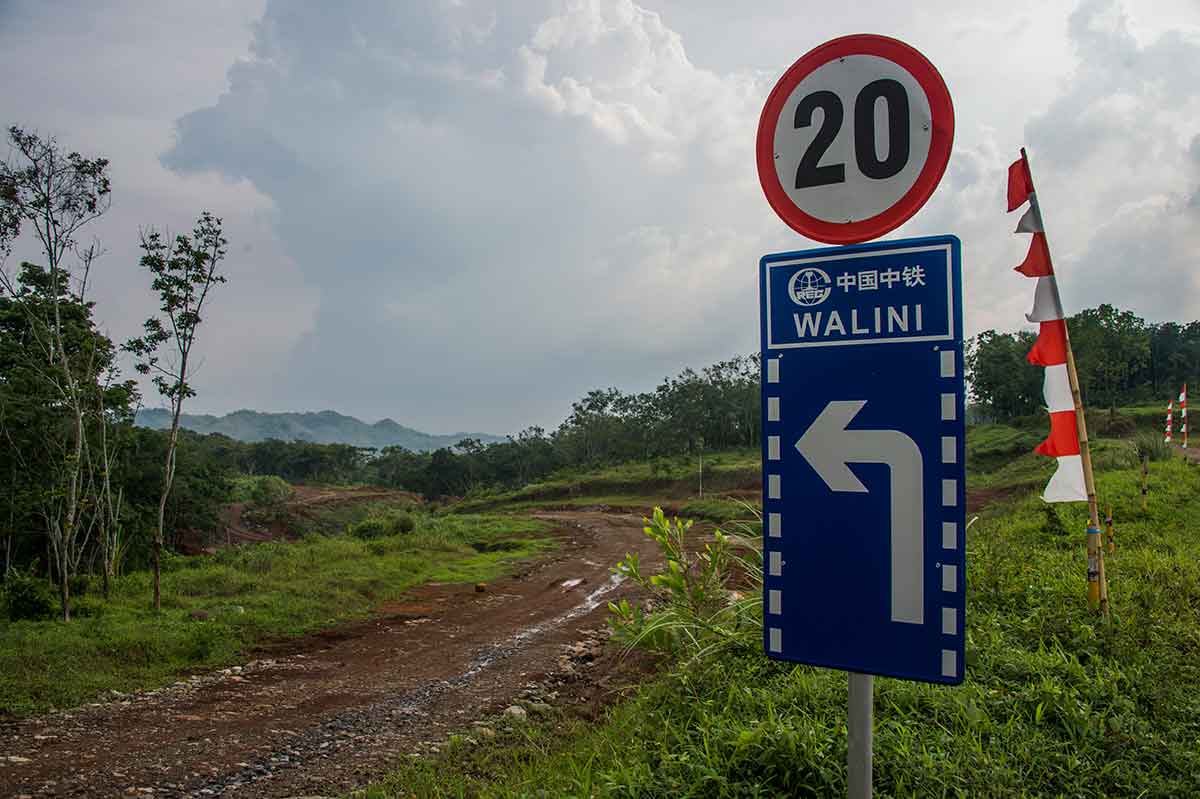China's massive Belt and Road Initiative (BRI) building push may create debt risks but is also responding to major infrastructure gaps in Asia and could boost global trade, World Bank officials say.
The relatively upbeat assessment of a sometimes-controversial programme comes despite the debt crisis now faced by Pakistan, a recipient of massive Chinese loans.
China launched the ambitious plan in 2013 under President Xi Jinping, seeking to link Asia, Europe and Africa with a network of ports, highways and railways.
It has dispersed tens of billions of dollars in loans, often to highly indebted countries, sparking criticism of Beijing for everything from "debt entrapment" to excluding local labour from projects funded by the plan.
But, meeting in Bali this week, officials from the World Bank and International Monetary Fund (IMF) said the BRI filled important gaps, while acknowledging concerns.
"There are huge opportunities: improved infrastructure means more trade, more investments, higher growth, bringing in landlocked regions," said Caroline Freund, the Bank's director of trade, regional integration and investment climate.
"But there are challenges as well. There are environmental and social risks, there are issues to do with public procurement, and sustaining public debt becomes an issue because these projects are expensive," she added.
The World Bank estimates that BRI-funded infrastructure could boost trade among countries involved by 3.6 percent, and global trade some 2.4 percent.
And officials say it is offering funding in areas where it is sorely needed.
Debt fears
"Several countries, especially in Central Asia and the Caucasus have benefitted in order to improve their infrastructure as well as also to promote additional interregional trade," said Jihad Azour, the IMF's director of the Middle East and Central Asia department.
"Central Asia will benefit from any additional investment that will lead to greater integration."
He called however for "careful" spending, urged "transparent" procurement processes, and warned that countries should maintain "their debt sustainability".
In the last five years, China's direct investment under the BRI has surpassed US$60 billion, leaving several recipients vulnerable.
The Centre for Global Development, a think-tank, says BRI investments have "significantly" increased the risk of debt crises in eight countries: Mongolia, Lao PDR, Maldives, Montenegro, Pakistan, Djibouti, Tajikistan and Kyrgyzstan.
But Freund said they were the exception, and Chinese loans remained a relatively small part of the total debt burdens of most countries involved in the BRI.
"Most of the countries borrowing from China in this BRI are in a pretty sound fiscal condition and are not in great risk of debt distress," said David Dollar, senior fellow at the Brookings Institution and a former World Bank official.
But for a small number of countries, there are "serious concerns," he acknowledged.
Among them is Pakistan, which relied heavily on BRI funding for a US$54-billion project linking its Gwadar port to China.
It now faces a balance-of-payments crisis and sent its finance minister to Bali this week seeking an IMF bailout.
Rising US interest rates are likely to make the situation worse for many countries, because BRI loans are mostly denominated in US dollars.
Market forces
Loan recipients who fail to meet their obligations can face serious consequences, with Sri Lanka forced to cede control of a deep-water port financed by the BRI to Beijing.
In August, Malaysia acted pre-emptively, shelving three China-backed projects, including a US$20-billion railway line, that it said it could no longer afford.
"We fully respect Malaysia's decision-making, based on their sustainability situation," Chinese Finance vice-minister Zou Jiayi told a panel at the Bali meeting.
"The Chinese government attaches great importance to the sustainability, we are the creditor," she added.
But, she emphasised, the initiative is not an aid programme.
"It's not like the Marshall plan, it's a development initiative based on market mechanisms, and driven by market forces," she said.
Beijing's commitment to market forces has been questioned by some however, with most projects financed with BRI money awarded to Chinese companies and built with Chinese labour.
A French treasury report released this week praised the BRI for contributing to areas with serious infrastructure shortfalls, but noted just 3.4 percent of projects financed by China were awarded to foreign companies.
And in Pakistan, it said, 91 percent of the revenue generated by the Gwadar port project over the next 40 years will benefit China.
Zou said the overwhelming reliance on Chinese labour was simply "cost-effective," but acknowledged Beijing could encourage Chinese companies to "take more advantage of the local labour."
The programme has also been criticised for funding politically-driven "white elephants" that are structurally unsound or largely useless.
Speaking in Beijing earlier this year, IMF Chief Christine Lagarde praised the "early indications of progress" under the initiative, but also warned of the need to ensure "that the Belt and Road only travels where it is needed." - AFP
